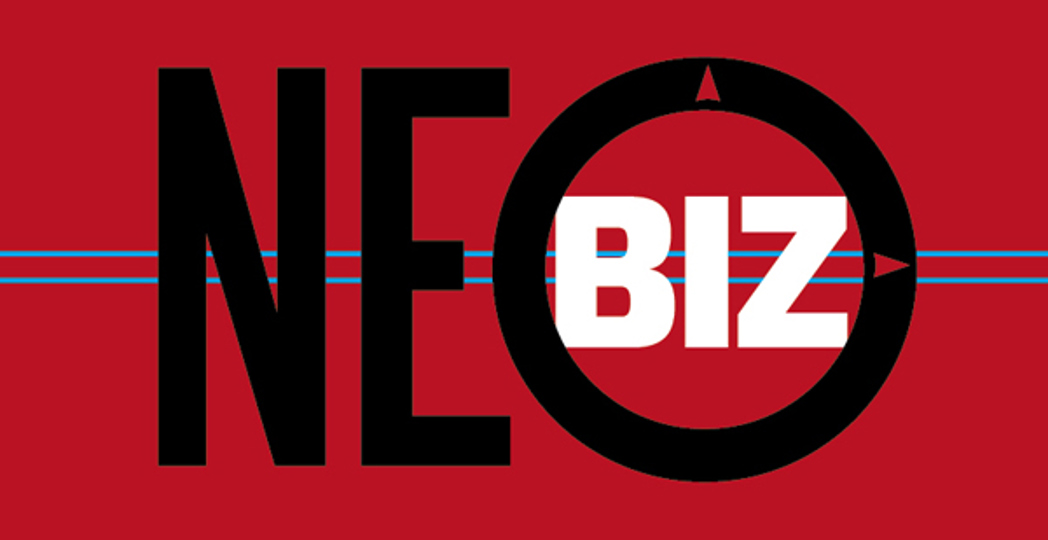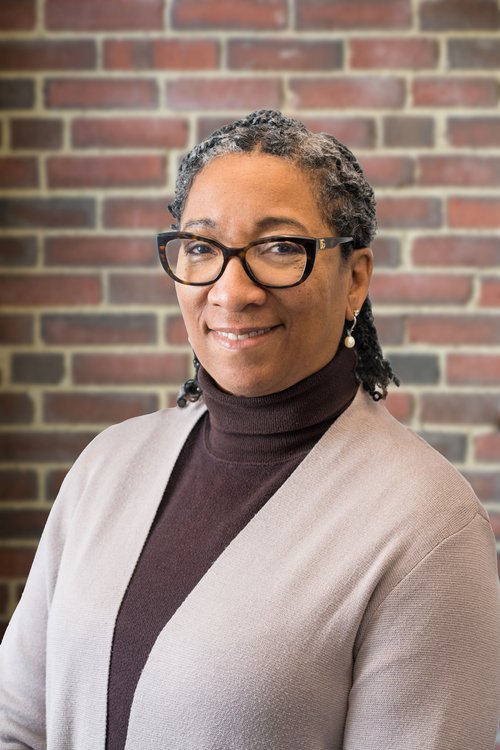NEO Biz: Leadership in Times of Crisis
by Terry Troy | May. 1, 2020 | 4:00 AM

The world has changed forever.
This isn’t the first crisis that people have faced, even in modern times. Many remember quite vividly the Stock Market Crash of 1987, the terrorist attacks of 9/11 and the Great Recession from 2008 to 2009.
But this one is quite different.
Surely, humans will survive. But what will the “brave new world” look like moving forward? Have business, nonprofit and government leaders pointed people in the right direction?
“Students of history and epidemiologists knew this day would come,” says Bruce Hennes, CEO of Hennes Communications, one of the few firms in North America focused exclusively on crisis management and crisis communications. “The Obama administration learned lessons from AIDS, SARS, MERS, Swine and Ebola, making plans to bolster the federal infrastructure to combat the next epidemic or pandemic. Fact and not politics: the Trump administration used the last three years to dismantle that infrastructure.”
President Donald Trump signed a $2 trillion coronavirus relief bill, the largest in the nation’s history, to help alleviate what is sure to be the devastating economic impact of the deadly pandemic.
However, leadership at the federal level, at least in terms of medical support, has been slow. And nature abhors a vacuum, Hennes points out.
“If Washington fails to lead, it falls to leaders of all stripes and sizes to provide leadership,” he says. “Big business needs to step up to the plate and demand plans and the budgets to carry out those plans.
“Business leaders need to put pressure on state and local leaders to make good decisions based on science. Local leaders and small business people need to gather their employees around and set the tone for service to their communities.”
Political views aside, leaders are judged by how they prepare for and react to a crisis. The business, nonprofit and government leaders in Northeast Ohio have done an excellent job of preparing Ohioans for the worst and pointing citizens toward the future — at least so far — especially up top.
“Gov. Mike DeWine has done a superlative job as the state’s chief executive,” Hennes admits. “Clearly, he has gathered bright minds around him, he’s looked at the scientific data, and he’s made a series of very difficult, politically unpopular decisions. History will be very kind to Mike DeWine.”
Of course, one should not forget the efforts of Dr. Amy Acton, director of the Ohio Department of Health, who advises the governor closely and has made excellent decisions and recommendations during the pandemic. Other leaders, especially in the health care community, agree that Ohio’s leaders have done an excellent job so far and are the envy of many other states.
“I have had the privilege of working with the governor during this crisis, and I think he has done an outstanding job as a leader,” says Dr. Tomislav Mihaljevic, president and CEO of the world-renowned Cleveland Clinic. “This is a moment of unity between health care workers, scientists, community partners and governments around the globe. I am proud of the work we are doing, and our ability to touch lives is a unique service. It comes with an overwhelming sense of purpose. Caring for others is an opportunity and a responsibility. We have had to make some difficult decisions. However, I can say with confidence that each decision is made with the best intentions.”
Difficult decisions are made easier with proper planning, Hennes points out. For years, his organization has been telling business owners and nonprofit executives that they need to be prepared for crisis situations.
“With the ubiquity of social media, it’s no substitute for having an operational plan and a crisis communications plan so when it hits the fan, the organization can respond in near-instant time,” says Hennes.
Many forward-thinking companies are doing just that. Westfield Bank holds crisis management drills every November. This year, those drills just happened to be on what a business organization should do when faced with a pandemic. Jon Park, founding CEO of Westfield Bank, denies any prescience of impending doom on the part of his organization.
“It was just coincidental,” says Park. “We do crisis management drills every year, and this year we just happened to choose pandemics. Now that it has become a reality, we are just fine tuning what we should do.”
Like restricting travel and working from home.
“As we look ahead, we see that it becomes a business planning and risk assessment process to anticipate these things,” Park says.
How far should a business go? Is there a point where the cure could be worse than the problem?
“In responding to uncertainty, you should use a phased-in approach,” Park offers. “Start with the basics in phase one, like handwashing. Then as events happen, you respond to them with your plans in phase two and phase three.”
Bill Koehler, CEO of Team NEO, says he agrees.
“The first thing we have to do is deal with the crisis itself,” Koehler says. “Then we have to transition to the new normal, and then to find new opportunities within that new normal.”
Even with proper planning, businesses today need counsel on how to adapt to an environment that is drastically changing.
“The biggest concern for our clients right now is how to keep their business alive if it has been ordered closed — and how to protect their employees if they remain open,” says Jon Pinney, managing partner of Korman Jackson and Krantz (KJK) and newly named chair of the board of directors for Destination Cleveland. “We also have countless questions from clients about employment issues, and our employment attorneys have been working nonstop. A lot of clients are concerned about the availability of business interruption insurance and managing their cash during this challenging period.
“We are advising clients on all of these fronts and have never seen such an immediate adverse economic impact on our client base. Our clients need us more today than ever, and we are working around the clock to support them.
“On the flip side, we have a number of clients that are thriving right now — mostly software and e-commerce-based clients,” adds Pinney.
A Brave New World
With crisis comes opportunity. There are businesses that are sure to boom during this pandemic. There also are companies that will continue to thrive by adapting to the new normal.
“Companies are having a wide range of experiences during this crisis,” says Koehler. “There are some companies that are a part of the health care supply chain or that are essential to the supply chain, such as companies that manufacture components for ventilators, and their business is very strong.
“There are also a lot of companies where people have been furloughed that are having big problems.”
Those companies have to address the issues that are near term, figure out what tools they have available and discover what kind of support is available from outside their organization that can help them address their issues to get through the crisis, says Koehler.
Medical supply and companies in health care will obviously do well. Many companies large and small are now producing protective masks. President Trump also used the Defense Production Act to compel larger companies like General Motors to partner with Ventec Life Systems to produce more ventilators. At the request of Gov. DeWine, the president also fast-tracked approval of a mask sanitizing system from the Battelle Memorial Institute.
So, changes are coming at a lightning fast pace.
Now, think about companies that manufacture cleaning supplies or can easily convert their production to meet immediate needs of the pandemic. Witness the explosion of distillers that switched production to hand sanitizer.
Teleconferencing and companies that offer remote working tools will surely grow. Indeed, an entire industry may grow exponentially coming out of this crisis: telemedicine.
“Historically, telemedicine was primarily utilized by the United States in rural areas or other limited circumstances,” says Kate Hickner, a partner in KJK who recently authored a paper on the topic. “During this pandemic, the case for telemedicine has become even more compelling. It provides a lifeline for patients who are physically isolated. It allows patients to receive the care they need in a manner that protects the patients and the providers from unnecessary exposure to the coronavirus. In my experience, both providers and patients are embracing telemedicine.”
The telemedicine experience of providers and patients during this pandemic will make the U.S. more comfortable delivering and receiving health care services in this manner, says Hickner.
“Although some of the telemedicine flexibility afforded by the federal and state governments and third-party payers during the pandemic may be temporary, I anticipate that the experience will spur other reforms that are more long-lasting,” she adds.
Clearly, telemedicine has the ability to improve the quality and efficiency of health care delivery, as well as population health, by providing greater access to care. It only makes sense that a major health care center like Northeast Ohio would be home to companies that specialize in implementing, providing or augmenting telemedicine services. So look for startup companies in this industry as the country starts to pull out of this pandemic.
“The health care delivery and reimbursement system is undergoing substantial change,” notes Hickner. “By facilitating high-quality and efficient access to care, telemedicine has the ability to benefit many industry stakeholders — including, for example, patients, hospitals, physicians, other providers, Medicare, Medicaid and third-party payers.”
However, Hickner also says it’s important for providers to seek solid legal, compliance and operational guidance. In addition to consulting with their health care attorneys, Ohio health care providers can find an abundance of helpful resources from the Ohio State Medical Association and other websites, she advises.
Although certain industries will benefit, there are those that face incredible challenges ahead. When Gov. DeWine directed the Ohio Department of Health to issue a director’s order closing bars and restaurants from in-house service, it was a prudent, but unpopular move that put the jobs of more than 585,000 Ohioans and 22,500 businesses at risk, according to the Ohio Restaurant Association.
It also saved countless lives.
Despite economic assistance for businesses and expanded unemployment benefits announced by the governor, Cleveland’s tourism, restaurant and entertainment industry is going to take a substantial hit.
“I’ve heard commentators suggest that 30 to 50 percent of restaurants/bars will not survive this,” says Cary Zimmerman, a partner in KJK who recently authored a paper offering restaurants advice during the pandemic. “That’s a lot of lost jobs and lost tax revenue. Some restaurants in Cleveland have permanently closed their doors already; many small businesses (as a lot of restaurants are) simply did not have the cash reserves to withstand this sudden sea change.”
“After 10-plus years of growth in Greater Cleveland, the tourism industry was really the first and one of the hardest hit industries in this crisis,” says David Gilbert, president and CEO of Destination Cleveland. “Since we’re still early in the pandemic, it’s hard to know when we’ll be coming out of the crisis, but I believe that the tourism industry can be at the leading edge coming out in terms of rehiring, consumer spending and tax creation.”
Destination Cleveland’s initial and ongoing focus is to support the community in any way it can — especially its partners and all the businesses that are part of Cleveland’s travel and tourism industry, adds Gilbert. That support, combined with being ready to gear back up to actively marketing the region, will be key to attracting visitors.
“We have to be nimble and leverage appropriate opportunities over these next few months to stay competitive,” says Gilbert. “I’m confident the travel and tourism industry will likely change and evolve as a result of this crisis, and we plan to evolve our organization and strategies accordingly to continue to lead growth in our community.”
“To come out the other side of this, restaurants will need to be operated shrewdly and innovate to find new ways to generate revenue,” adds Zimmerman.
“If they suddenly had to lay off staff, they should do everything they can to support the people who helped build and run the business by assisting them with obtaining unemployment and directing them to interim employment opportunities,” she says.
Laid off staff will be needed when the ban is lifted, adds Zimmerman, and by treating them with compassion now, shuttered businesses ensure a more seamless re-engagement later on.
In the interim, Zimmerman says small businesses should be reaching out to renegotiate new terms, including deferrals, rate/fee reduction and the like, with lenders, landlords and suppliers. They should also seek any financial assistance that they can to help weather this crisis, which will eventually come to an end.
“Greater Cleveland’s position when we emerge from the crisis is hard to predict,” says Gilbert. “We’re fortunate to be in a state that has instituted aggressive public health policies to slow the pandemic’s spread and to live in a city whose leading medical institutions are demonstrating their innovation and willingness to collaborate. We just have to hope that the state’s policies and the region’s health care community will save lives and demonstrate Cleveland’s medical expertise to people around the country.”
That also means demonstrating leadership in social issues, caring for one another and helping the local economy rebound and find the new normal.
The good news is that the region’s businesses, nonprofit, government and community leaders are already leading Ohioans in the right direction.
Trending
-
1
-
2
-
3
-
4
-
5










